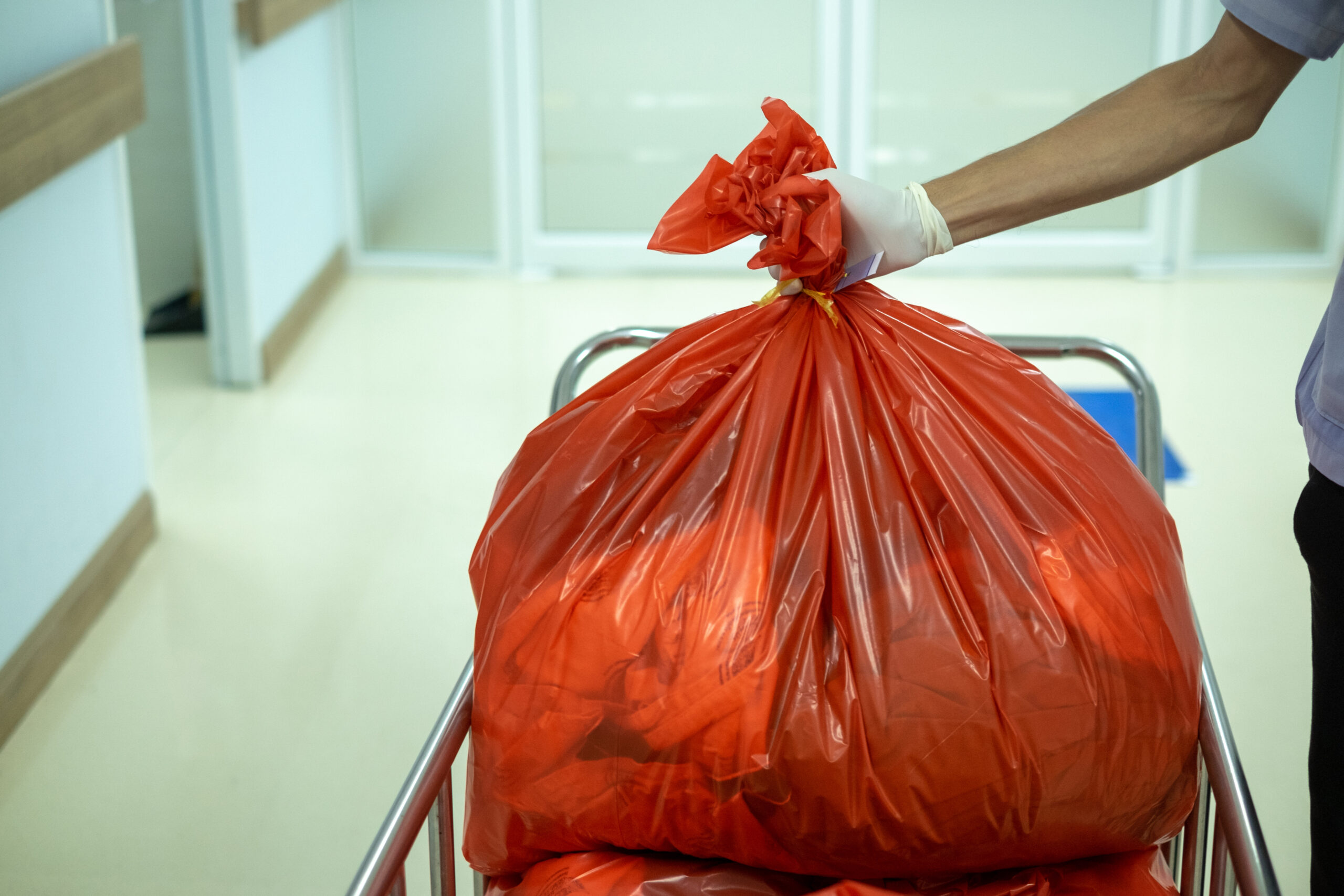
Regulated medical waste is a term applied to any category of biomedical waste contaminated by blood or bodily fluids, or any type of healthcare waste that contains any infectious or potentially infectious materials derived from a person or an animal. Such waste is generated during diagnosis, treatment, or immunization of humans or animals. It can also result from research activities pertaining to biological substances.
The majority of regulated medical wastes are typically generated in hospitals, urgent care facilities, nursing homes, and research laboratories, but also in primary care settings, and in physician, dental and veterinarian offices. Because biomedical waste can pose such serious health risks to humans and the environment, by law, it must be properly managed and disposed of.
Federal Agencies That Regulate Medical Waste
The majority of laws that regulate medical waste are not covered by federal environmental laws or US EPA regulations, except for medical waste that also meets the definition of hazardous waste. Instead, the regulation of biomedical waste, principally, falls under state jurisdiction. State health and/or environmental agencies or departments regulate medical waste in conjunction with a handful of federal agencies that manage certain aspects of regulated medical waste.
These federal agencies include OSHA (Occupational Safety & Health Administration), which administers bloodborne pathogen standards to protect the health and safety of employees. The DOT (Department of Transportation) has specific packaging requirements that regulate the transportation of medical waste. The FDA (Food and Drug Administration) recommends that health care facilities and labs must use FDA-approved sharps disposal containers for used needles and other medically classified sharps. The FDA recommendations follow CDC (Centers for Disease Control) guidelines on how to treat or decontaminate medical wastes for safe handling.
In Maine, the legislature directed the state’s Board of Environmental Protection (BEP) to adopt rules to regulate the handling and disposal of biomedical waste. Maine’s BEP is an independent decision-making authority that is part of the Department of Environmental Protection. The rules issued by the BEP not only identifies what biomedical waste is subject to regulation, but establishes the proper packaging, labeling, handling, storage, transportation and treatment requirements for it.
BEP rules define biomedical waste as those wastes that “… may contain human pathogens of sufficient virulence and in sufficient concentrations that exposure to it …” could affect the public health, its safety and welfare, and that of the environment. The rules further identify six categories of biomedical waste and one category of cytotoxic substances as wastes subject to regulation. The categories of biomedical waste subject to regulation are:
1. Human Blood and Body Fluids
This category of biomedical waste includes discarded human blood, serum, plasma, and any blood products. It also includes discarded body fluids resulting from surgery, obstetrics, emergency care, autopsies, or embalming, including cerebrospinal fluid, synovial fluid, pleural fluid, and also peritoneal fluid, pericardial fluid and amniotic fluid.
Blood or bodily fluid saturated material would include discarded items that are used to perform surgeries, obstetrical procedures, medical treatment, autopsies and so forth that are soaked or dripping with human blood, blood products or body fluids. Surgical gloves and masks, sponges, aprons, dressings, drapes, disposable sheets and towels, underpads, suction canisters, and plastic tubing, used syringes without needles, and dialysis unit wastes are prime examples that fall under this category.
2. Pathological and Anatomical Waste
Human tissues, organs, and anatomical (body) parts including teeth which are discarded from surgeries, autopsies, obstetrical and laboratory procedures are subject to regulation. Pathological wastes are typically small tissue sections derived from biopsies or surgical procedures for examination in a laboratory to understand the nature of a disease or affliction. Anatomical wastes are human tissues, organs, or body parts that are removed during surgery, autopsy, or other medical procedures, and are intended for disposal.
3. Sharps
Medical sharps are those items such as hypodermic needles, syringes, scalpel blades, suture needles, disposable razors, lancets, capillary tubes, Pasteur pipettes, broken glassware, needles attached to IV tubing and dialysis bags, and any other objects capable of causing punctures or cuts, that have been used in patient, animal, and cadaver care, or in medical and biomedical research laboratories.
4. Cultures and Stocks of Infectious Agents
This category includes cultures and stocks of infectious agents that need to be discarded, as well as the culture dishes and devices used to transfer, inoculate and mix the infectious agents. Also, clinical specimens and the associated containers or vials that are ready to be discarded, along with the discarded biologicals and the waste generated from the production of biologicals and recombinant DNA research.
5. Animal Research Byproducts
Any type of biomedical waste generated in animal research facilities that contains organisms or agents not usual to that animal’s normal environment and which are hazardous or pathogenic to humans are considered a regulated medical waste subject to proper management and disposal. This could include carcasses, body parts, bedding or other waste generated by research.
6. Cytotoxic Substances
Wastes from cytotoxic (antineoplastic) drugs that are not identified as hazardous wastes in Chapter 850 per the Department of Environmental Protection regulations, and chemotherapy waste materials that have trace amounts of cytotoxic agents, are to be managed and disposed of as biomedical waste.
Proper disposal of biomedical waste is crucial to prevent health risks to humans and to protect the environment. Maine Labpack offers comprehensive, no-contract biomedical waste disposal services for businesses, facilities and generators of all varieties. We can help ensure your facility is in compliance with regulations and that your personnel, patients, staff and visitors are safe from biomedical hazards of any kind. To learn more about Maine Labpack’s biomedical waste services, please contact us today.
